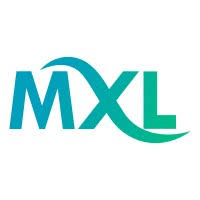
Robinjasper1109
Uploaded on Jul 28, 2025
Blended learning, combining traditional instructor-led training with digital components, has long been lauded as a flexible and effective approach to corporate education. It aims to harness the best of both worlds: the personalized interaction of live sessions and the scalability and convenience of online resources. However, even the most thoughtfully designed blended programs can encounter challenges, such as information overload in lengthy online modules or a lack of reinforcement between live sessions. This is precisely where the strategic integration of microlearning becomes a powerful differentiator, truly elevating blended learning outcomes to unprecedented levels of effectiveness and impact. Microlearning, at its core, involves breaking down complex information into highly focused, digestible units—often called "snippets"—each designed to achieve a single learning objective. These concise modules, typically consumable in just a few minutes, are delivered through an agile Microlearning platform, making knowledge acquisition seamless and immediate. When woven into a blended learning strategy, microlearning acts as a critical enhancer, optimizing every phase of the learning journey and ensuring that the combined approach yields superior, more sustainable results. 1. Pre-Training Preparation: Building a Solid Foundation One of the most significant ways microlearning elevates blended learning outcomes is by revolutionizing the pre-training phase. Instead of relying on lengthy reading materials or generic introductory videos, microlearning provides highly targeted, engaging content that primes learners for success before they even attend a live session or dive into a larger online module. For a Finance team preparing for a workshop on complex financial modeling, microlearning could offer short, interactive primers on key terminology or foundational concepts. In Health care, nurses attending a hands-on training for a new medical device could receive microlearning videos demonstrating basic setup procedures, allowing them to arrive at the practical session already familiar with the equipment. This ensures that all participants start with a consistent baseline understanding, enabling the synchronous parts of the blended program to focus on deeper discussion, critical thinking, and practical application, thereby maximizing the value of valuable instructor time. 2. In-Session Reinforcement and Engagement: Dynamic Learning During live or synchronous online sessions, microlearning can transform passive listening into active engagement, directly elevating learning outcomes. Instead of traditional lecture formats, instructors can integrate quick Microlearning Application or interactive elements to reinforce concepts, check understanding, or stimulate discussion. In a Banking compliance training session, after explaining a particularly complex regulation, a quick micro-quiz or a short animated scenario can immediately gauge learner comprehension and highlight areas needing further clarification. For Mining safety training, a trainer could use a 90-second micro-video to demonstrate a specific safety maneuver, followed by a collaborative discussion, making the learning more dynamic and memorable. The strategic use of Microlearning Tools in these moments ensures that key takeaways are immediately reinforced, significantly boosting retention within the session itself. 3. Post-Training Retention and Performance Support: Sustaining Knowledge Perhaps the most impactful role of microlearning in elevating blended learning outcomes is in combating the "forgetting curve" and providing sustained performance support. Blended learning can deliver a wealth of information, but without reinforcement, much of it can be lost. Microlearning provides the perfect solution through spaced repetition and just-in-time support. A smart microlearning platform can automate the delivery of brief, relevant refreshers at optimal intervals after a blended course. For Retail employees who completed a blended training on new customer service protocols, daily or weekly microlearning snippets offering quick tips or handling common objections ensure the knowledge remains fresh and applicable. This "just-in-time" support, delivered via the microlearning software, ensures that learning is continuously reinforced and readily available in the flow of work, leading to sustained skill application and improved efficiency. An AI-Powered Learning Platform can even personalize these refreshers, sending specific content based on an employee's performance in previous assessments or identified areas of weakness, further optimizing long-term retention. 4. Agile Content Creation and Management Integrating microlearning also makes the entire blended learning ecosystem smarter and more agile from a content management perspective. Microlearning Authoring Tools, especially those with an AI-powered authoring tool, significantly accelerate content creation. Large, complex training manuals or policy documents can be rapidly converted into digestible micro-modules, reducing development time and ensuring that blended learning content remains current and responsive to evolving business needs. For a Pharma company rolling out new drug protocols, an AI-powered tool can swiftly generate microlearning content from extensive research papers, seamlessly integrating it into existing blended learning programs for medical representatives. A dedicated Microlearning LMS (Learning Management System) then serves as the central hub, allowing administrators to seamlessly combine traditional course enrollments with microlearning assignments, track learner progress across all modalities, and provide comprehensive analytics on engagement, completion rates, and, crucially, the impact on business outcomes. For the Oil and Gas industry, this means tracking how well field engineers apply safety procedures learned in a workshop, reinforced by microlearning, directly impacting operational safety and efficiency. For Insurance, it means monitoring agent proficiency in new policy details, learned through a blend of virtual classes and micro-modules, to ensure consistent customer service. By strategically weaving microlearning into every phase of a blended learning strategy, organizations can unlock unprecedented levels of effectiveness. This approach not only caters to the modern learner's preferences for flexibility and conciseness but also maximizes the return on training investments, cultivating a continuously skilled, adaptable, and highly efficient workforce ready to meet the challenges of tomorrow.

Comments